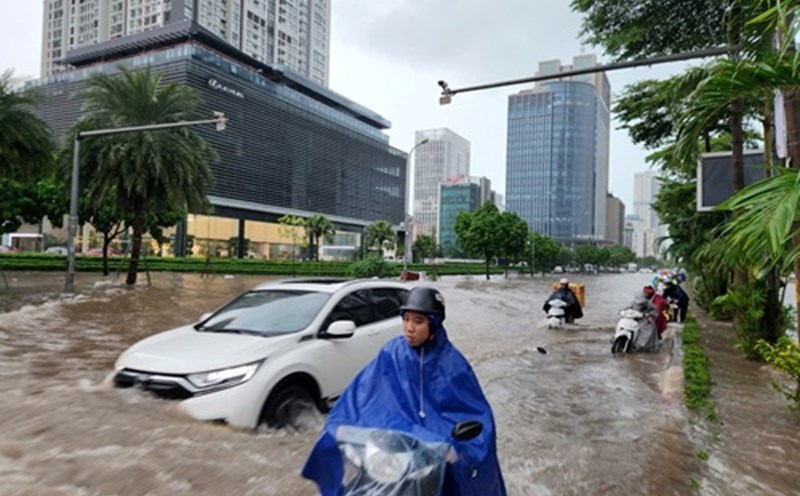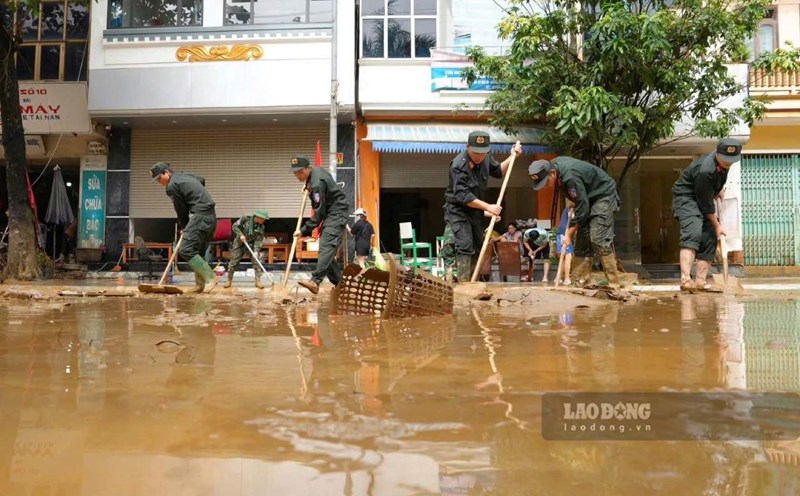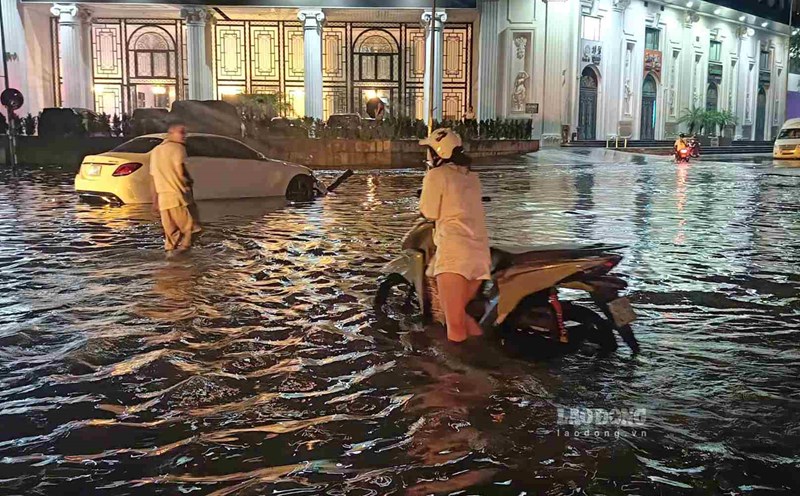According to Mr. Le Van Du - Head of the Department of Infrastructure Management for Water Supply and Drainage (Hanoi Department of Construction), the rainfall on September 30 was too heavy, continuous and prolonged, exceeding the designed capacity of the urban drainage system. "The Department of Construction apologizes to the people and hopes that people will share and sympathize with this objective difficulty" - Mr. Du said.
Previously, to proactively respond, the Department of Construction directed drainage units to deploy a plan to be on duty and lower the water level of the system from September 27; maintain 100% of human resources (more than 2,479 workers) on duty, mobilizing over 500 machines and equipment. At the same time, coordinate with the Department of Agriculture and Environment to lower water levels in rivers, ditches, and irrigation lakes.
Data from the Department of Construction shows that the rainfall at many locations is far exceeding the design capacity of 310mm/2 days: O Cho Dua 527.2mm (exceeding 170%), Hai Ba Trung 407.7mm (exceeding 131.5%)... causing the system to overload. When heavy rain continues, water overflows onto the road surface, quickly gathering to low-lying areas, causing deep flooding.
In addition, Hanoi's drainage system is still in the investment process and is not yet synchronous. Many connecting points and regulating lakes are slow to be implemented; drainage infrastructure in some new urban areas is not connected to the general system. Some areas with lower foundations around, when heavy rain, water flows in quickly but lack pumping stations and discharge sources, leading to local flooding.
Mr. Le Van Du added that the drainage force is currently on duty 24/7 and gathers enough human resources and equipment to promptly handle flooded areas; maximize the capacity of existing works, prioritize drainage for the To Lich River basin to Yen So pumping station through the regulating gates of Yen So lake.
In the long term, the Department of Construction recommends that the Hanoi People's Committee invest in local flood prevention works such as reservoirs combined with pumping stations to change steps on public land, parks, and flower gardens; at the same time, in the process of developing the Capital's Height and Drainage Plan to 2045, with a vision to 2065, additional factors will be calculated for climate change, and dealing with rains greater than 310mm/2 days.












